Letter Of Transmittal Construction
[Your Name]
[Your Address]
[City, State, Zip Code]
[Email Address]
[Phone Number]
[Date]
[Recipient's Name]
[Recipient's Title/Position]
[Recipient's Organization]
[Address]
[City, State, Zip Code]
Subject: Letter of Transmittal for Construction Project [Project Name/Number]
Dear [Recipient's Name],
I am pleased to present this Letter of Transmittal in conjunction with the completion of [Project Name/Number], a significant construction endeavor executed by [Your Company/Organization]. It is with great pride and satisfaction that I submit this comprehensive construction project to [Recipient's Organization] in accordance with our contractual obligations.
The purpose of this Letter of Transmittal is to formally deliver all relevant documents, reports, and materials related to the successful completion of the construction project. We have worked diligently to ensure that all aspects of the project have been carried out with precision, adhering to the highest industry standards and safety protocols.
Enclosed with this letter, you will find the following documents:
1. Project Completion Report: This report provides a detailed overview of the project, including key milestones, challenges encountered, and the final outcomes achieved.
2. Final Budget Report: The financial report presents a comprehensive breakdown of all costs incurred during the construction process, along with any approved variations.
3. As-Built Drawings: These drawings represent the final state of the construction project, showing any modifications made during the construction process.
4. Operation and Maintenance Manuals: We have included detailed manuals outlining the necessary information for the operation and maintenance of the completed project.
5. Warranty Information: Please find attached all warranty details for the materials and workmanship provided by us as per our contractual agreement.
Throughout the course of the project, our team worked collaboratively to ensure the successful execution of the construction process. We sincerely appreciate the opportunity to be part of this significant project and commend the professionalism and cooperation demonstrated by your team at [Recipient's Organization].
Should you have any further questions or require any additional information, please do not hesitate to reach out to us. Our team remains available to assist you in any way necessary.
Once again, I extend my gratitude to you and the entire team at [Recipient's Organization] for your support and cooperation during this project. We look forward to the possibility of collaborating on future endeavors.
Thank you for your attention to this matter.
Sincerely,
[Your Name]
[Your Title/Position]
[Your Company/Organization Name]
Standard Construction Project Transmittal Letter
Subject: Transmittal of Construction Documents for [Project Name]
Dear [Recipient Name],
I am writing to transmit the following construction documents for your review and action regarding the [Project Name] located at [Project Address].
Enclosed Documents:
- [Document Type 1] (Quantity: [Number] copies)
- [Document Type 2] (Quantity: [Number] copies)
- [Document Type 3] (Quantity: [Number] copies)
Purpose of Transmittal: [For your review/For your approval/For construction/For record/For information]
These documents are being submitted in accordance with our contract dated [Date] and project specifications. Please review the enclosed materials and provide your response by [Deadline Date].
Should you require any clarifications or additional information regarding these documents, please do not hesitate to contact me at [Phone Number] or [Email Address].
We kindly request that you acknowledge receipt of this transmittal and the enclosed documents at your earliest convenience.
Thank you for your attention to this matter.
Sincerely,
[Your Name]
[Your Title]
[Company Name]
[Contact Information]
Transmittal Letter for Shop Drawings and Submittals
Subject: Shop Drawing Submittal - [System/Component Name] - [Project Name]
Dear [Architect/Engineer Name],
Please find enclosed the shop drawings and product submittals for [specific system or component] as required under Section [Specification Section] of the project specifications for [Project Name].
Submittal Details:
- Submittal Number: [Number]
- Specification Section: [Section Number]
- Drawing Numbers: [List of Drawing Numbers]
- Number of Copies: [Number]
- Revision: [Revision Number]
This submittal includes detailed fabrication and installation drawings prepared by [Subcontractor/Manufacturer Name] for your review and approval. All materials and methods comply with the project specifications and applicable building codes.
We respectfully request your review and approval within [Number] days to maintain the project schedule. Any deviations from the original specifications are clearly marked and noted for your consideration.
Please indicate your action by marking the appropriate box on the enclosed submittal form and return one copy to our office. If you require additional information or samples, please contact us immediately.
Your timely response is appreciated to prevent any delays in the construction schedule.
Respectfully,
[Your Name]
[Your Title]
[Contractor Company Name]
[Contact Information]
Final Project Closeout Transmittal Letter
Subject: Final Closeout Documents - [Project Name] - Project Completion
Dear [Client/Owner Name],
It is with great satisfaction that we transmit the final closeout documents for the [Project Name], marking the successful completion of this construction project.
Enclosed Closeout Package:
- As-Built Drawings (Complete Set)
- Operation and Maintenance Manuals
- Equipment Warranties and Guarantees
- Certificate of Substantial Completion
- Final Lien Waivers from All Subcontractors
- Certificate of Occupancy
- Final Inspection Reports
- Spare Parts and Attic Stock Documentation
- Training Documentation and Videos
- Final Change Order Summary
- Project Photographs
All punch list items have been completed, and final inspections have been passed. The project was delivered [on schedule/X days ahead of schedule] and [on budget/within budget parameters].
We have truly enjoyed working with you on this project and appreciate the collaborative relationship throughout the construction process. Our warranty period begins on [Date] and extends for [Duration]. Please do not hesitate to contact us should any issues arise during the warranty period.
Thank you for choosing [Company Name] for your construction needs. We look forward to future opportunities to serve you.
With appreciation,
[Your Name]
[Your Title]
[Company Name]
[Contact Information]
Urgent Change Order Transmittal Email
Subject: URGENT - Change Order #[Number] Requires Immediate Approval - [Project Name]
Hi [Recipient Name],
I'm sending this urgent transmittal regarding Change Order #[Number] for the [Project Name] that requires your immediate attention and approval.
Change Order Details:
- Description: [Brief Description of Change]
- Reason: [Unforeseen site condition/Design modification/Code requirement/Owner request]
- Cost Impact: [Dollar Amount] [increase/decrease/no cost]
- Schedule Impact: [Number] days [extension/acceleration/no impact]
- Date Needed: [Specific Date]
This change order has become necessary due to [specific reason] and will impact our ability to proceed with [specific work] if not approved by [deadline]. We've attached detailed cost breakdown and schedule analysis for your review.
Critical Path Impact: This work is on the critical path, and any delay in approval will result in project delays and potential additional costs.
Please review and respond by [Date and Time] so we can proceed without interrupting the construction schedule. I'm available for an immediate call at [Phone Number] if you need any clarification.
Thanks for your prompt attention to this matter.
Best regards,
[Your Name]
[Your Title]
[Company Name]
[Phone]
RFI Response Transmittal Email
Subject: Response to RFI #[Number] - [Brief Description] - [Project Name]
Dear [Contractor Name],
Please find below our response to Request for Information (RFI) #[Number] submitted on [Date] regarding [brief description of the issue].
RFI Summary:
- RFI Number: [Number]
- Date Submitted: [Date]
- Subject: [Subject Line]
- Drawing Reference: [Drawing Numbers]
- Specification Reference: [Section Numbers]
Response:
[Detailed response to the question or clarification requested. Be specific and reference relevant documents, drawings, or specifications.]
Attachments:
- [Sketch/Detail drawing if applicable]
- [Specification excerpt if applicable]
- [Reference documents if applicable]
Please proceed with the work in accordance with this response. If you require any additional clarification, please submit a follow-up RFI immediately as this response is considered final for the purposes of construction.
This response should be distributed to all relevant subcontractors and trade partners. Please acknowledge receipt of this transmittal.
Regards,
[Your Name]
[Your Title]
[Design Firm/Company Name]
[Contact Information]
Payment Application Transmittal Letter
Subject: Payment Application No. [Number] - [Project Name] - [Month/Period]
Dear [Owner/Client Name],
Enclosed please find Payment Application No. [Number] for the period ending [Date] for the [Project Name].
Payment Application Summary:
- Original Contract Sum: $[Amount]
- Net Change by Change Orders: $[Amount]
- Current Contract Sum: $[Amount]
- Total Completed and Stored to Date: $[Amount]
- Retainage: $[Amount]
- Total Earned Less Retainage: $[Amount]
- Less Previous Certificates for Payment: $[Amount]
- Current Payment Due: $[Amount]
This application reflects work completed through [Date] and has been reviewed and approved by [Architect/Engineer Name]. All work has been performed in accordance with the contract documents and applicable codes.
Attached Documentation:
- AIA Form G702 - Application and Certificate for Payment
- AIA Form G703 - Continuation Sheet
- Schedule of Values Breakdown
- Conditional Lien Waivers from Subcontractors
- Supporting Documentation for Stored Materials
We respectfully request payment within [Number] days as stipulated in our contract. Progress on the project remains [on schedule/ahead of schedule] and we continue to meet all quality standards.
Please contact me if you require any additional information or clarification regarding this payment application.
Thank you for your prompt attention.
Sincerely,
[Your Name]
[Your Title]
[Contractor Company Name]
[Contact Information]
Casual Progress Update Transmittal Email
Subject: Quick Update & Document Package - [Project Name]
Hey [Recipient Name],
Hope you're doing well! Just wanted to send over the latest document package for [Project Name] and give you a quick update on where we're at.
What's Included:
- Updated progress photos (looking great!)
- This week's meeting minutes
- Revised schedule showing we're actually 3 days ahead
- Updated safety reports (still maintaining zero incidents!)
Quick highlights: The [specific work] is wrapping up nicely, the [another specific work] team is starting next Monday, and we managed to solve that [issue] without any cost impact. Pretty happy with how everything's moving along.
Take a look when you get a chance and let me know if you have any questions or concerns. No rush, but if you could review the schedule updates by Friday that would be awesome.
Feel free to call me if you want to chat about any of this stuff.
Cheers,
[Your Name]
[Phone]
Formal Notice of Delay Transmittal Letter
Subject: Formal Notice of Project Delay - [Project Name]
Dear [Owner/Client Name],
This letter serves as formal notice of delays to the [Project Name] construction schedule as required under Article [X] of our construction contract dated [Date].
Delay Details:
- Cause of Delay: [Specific cause - weather, unforeseen conditions, owner changes, etc.]
- Date Delay Commenced: [Date]
- Estimated Duration: [Number] days
- Affected Activities: [List of affected construction activities]
- Impact on Substantial Completion Date: [Number] days extension requested
- New Projected Completion Date: [Date]
Description of Delay:
[Detailed description of what caused the delay, why it was unforeseeable or unavoidable, and how it impacts the critical path of the project schedule]
We have made every reasonable effort to mitigate this delay through acceleration, re-sequencing of work, and increased crew sizes where possible. However, the nature of this delay is beyond our control and falls under [specific contract clause] of our agreement.
Attached Documentation:
- Updated CPM Schedule with delay analysis
- Daily logs documenting the delay
- Photographs showing site conditions
- Correspondence related to the delay cause
- Cost impact analysis (if applicable)
We request a [Number]-day time extension without penalty as provided for under the contract terms. This notice is submitted within the timeframe required by our contract.
Please acknowledge receipt of this notice and advise us of the process for formal review and approval of the requested time extension.
Respectfully submitted,
[Your Name]
[Your Title]
[Contractor Company Name]
[Contact Information]
Material Sample Transmittal Letter
Subject: Material Samples for Approval - [Material Type] - [Project Name]
Dear [Architect/Designer Name],
Please find enclosed physical samples of [material type] for your review and selection for the [Project Name].
Sample Details:
- Material: [Specific material type]
- Manufacturer: [Manufacturer name]
- Product Line: [Product line/series]
- Number of Samples: [Number]
- Specification Section: [Section number]
- Colors/Finishes Submitted: [List of options]
Each sample is labeled with the corresponding product code and finish name for your reference. These samples represent the actual materials that will be installed on the project and meet all requirements outlined in Section [X] of the project specifications.
Please review these samples and indicate your approval or comments on the enclosed form. We recommend reviewing the samples under natural lighting conditions similar to the project environment for accurate color representation.
If none of these samples meet your requirements, please let us know and we can provide alternative options from our approved manufacturers list. We request your approval by [Date] to ensure timely procurement and delivery.
Please return one marked sample along with the approval form to our office. The remaining samples are yours to keep for reference.
Thank you for your consideration.
Respectfully,
[Your Name]
[Your Title]
[Company Name]
[Contact Information]
Preliminary Document Review Transmittal Email
Subject: PRELIMINARY REVIEW - [Document Type] - [Project Name] - Not for Construction
Hi [Recipient Name],
I'm sending over some preliminary documents for the [Project Name] for your early review and feedback. Please note these are NOT final and should NOT be used for construction purposes.
What's Attached (PRELIMINARY ONLY):
- Draft drawings (Rev 0)
- Initial specifications outline
- Preliminary cost estimate
- Conceptual schedule
Purpose of This Transmittal:
I wanted to get these in your hands early so we can catch any major issues or concerns before we finalize everything. This is really just a "gut check" to make sure we're all on the same page before we invest more time in final documentation.
What I Need from You:
- Big picture feedback on the overall approach
- Any major concerns or red flags you see
- Confirmation that we're meeting your expectations
- Thoughts on the preliminary budget and schedule
Timeline:
If you could give these a quick look-through by [Date] and shoot me your thoughts, that would be fantastic. Don't need a formal review at this point - even a quick phone call or bullet-point email would be super helpful.
Remember: These are working documents and will change significantly before final issuance.
Thanks for taking a look!
[Your Name]
[Phone]
What is a Letter of Transmittal in Construction and Why is it Important?
A Letter of Transmittal in construction is a formal document that accompanies and announces the delivery of other documents, materials, or information. It serves as a cover letter that identifies what is being sent, to whom, for what purpose, and what action is required. In construction projects, these letters create an official record of document exchange, establish accountability, and ensure all parties are informed of important submissions. They are essential for maintaining clear communication chains, documenting the timeline of submissions, and protecting all parties legally by establishing proof of delivery and receipt.
When Should You Send a Letter of Transmittal in Construction?
- When submitting shop drawings, product data, or samples to architects or engineers for approval
- During the delivery of design drawings, specifications, or construction documents to contractors
- When forwarding payment applications, invoices, or financial documentation to project owners
- Upon submission of change orders, requests for information (RFIs), or clarifications
- When delivering as-built drawings, warranties, and closeout documents at project completion
- During the transmission of permits, certificates, inspection reports, or compliance documentation
- When sending meeting minutes, progress reports, or project correspondence requiring documentation
- Upon delivery of test results, material certifications, or quality control documentation
- When submitting delay notices, claims, or formal legal notifications under contract requirements
- During the exchange of bid documents, proposals, or contract modifications
Who Should Send Construction Transmittal Letters?
- General contractors transmitting information to owners, architects, or subcontractors
- Architects and engineers sending design documents, approvals, or technical responses
- Subcontractors submitting shop drawings, samples, or specialized documentation to general contractors
- Project owners delivering contracts, approvals, or formal instructions to the project team
- Construction managers coordinating document flow between multiple project stakeholders
- Suppliers and manufacturers providing product data, warranties, or material certifications
- Inspectors and testing agencies submitting reports and compliance documentation
- Legal representatives sending formal notices, claims, or dispute-related documentation
- Administrative staff managing routine document distribution and record-keeping
To Whom Should Construction Transmittal Letters Be Addressed?
- Project owners or their designated representatives for contractor submittals and requests
- Architects or engineers of record for technical submissions requiring professional review
- General contractors for subcontractor submittals and coordination documents
- Building officials and permitting authorities for regulatory compliance documentation
- Subcontractors for instructions, approved drawings, or coordination information
- Project managers overseeing document control and construction administration
- Consultants (structural, MEP, civil engineers) for specialized technical reviews
- Lenders or financial institutions for payment-related documentation
- Insurance companies or sureties for claims, certifications, or compliance records
- Multiple parties simultaneously when documents require distribution to the entire project team
How to Write an Effective Construction Transmittal Letter
- Begin with a clear subject line identifying the project name, document type, and purpose
- State explicitly what is being transmitted using a detailed itemized list with quantities
- Specify the purpose of the transmittal (for approval, information, review, construction, record)
- Reference relevant contract sections, specification numbers, or drawing references
- Indicate the action required from the recipient and establish clear deadlines
- Include contact information for questions or clarifications
- Request acknowledgment of receipt when documentation tracking is critical
- Maintain a professional, concise tone while providing all necessary information
- Attach or enclose all referenced documents and verify completeness before sending
- Retain copies of the transmittal and all attachments for project records
- Number transmittals sequentially for easy reference and tracking
- Follow up if acknowledgment or response is not received within the expected timeframe
Essential Elements and Structure of Construction Transmittal Letters
- Header Information: Project name, project number, transmittal number, and date
- Recipient Information: Name, title, company, and address of the receiving party
- Sender Information: Name, title, company, and complete contact details
- Subject Line: Clear, specific description of what is being transmitted
- Itemized List: Detailed inventory of all enclosed documents with quantities and revision numbers
- Purpose Statement: Explicit declaration of why documents are being sent and action required
- Deadline Information: Due dates for reviews, approvals, or responses when applicable
- Reference Information: Contract numbers, specification sections, drawing numbers, or related correspondence
- Special Instructions: Any specific handling, distribution, or review requirements
- Acknowledgment Request: Statement requesting confirmation of receipt when necessary
- Attachments: All referenced documents physically enclosed or digitally attached
- Signature Block: Formal signature, printed name, and title of sender
- Distribution List: Copy recipients when multiple parties need the same information
Requirements and Prerequisites Before Sending Transmittal Letters
- Verify all referenced documents are complete, current, and properly formatted
- Confirm document revision numbers and dates match the most recent approved versions
- Check that required signatures, seals, or certifications are present on transmitted documents
- Ensure compliance with contract-specified submission procedures and formats
- Review contract clauses regarding timing, number of copies, and submission methods
- Confirm recipient information is accurate and current for proper delivery
- Obtain necessary internal approvals before transmitting documents externally
- Prepare required number of copies (digital and physical) as specified in contract
- Organize documents in logical order matching the transmittal itemized list
- Verify file sizes and formats are compatible if transmitting digitally
- Check project-specific document control procedures and numbering systems
- Ensure transmittal tracking logs are prepared to record the submission
Formatting Guidelines for Construction Transmittal Letters
- Length: Keep transmittals concise, typically one to two pages maximum
- Tone: Use professional, formal language for official project documents
- Style: Employ clear, direct business writing without unnecessary elaboration
- Format: Use standard business letter format with proper spacing and alignment
- Font: Select professional, readable fonts (Arial, Times New Roman, Calibri) in 11-12 point size
- Itemization: Use numbered or bulleted lists for enclosed documents rather than paragraphs
- Digital vs. Print: Email transmittals may be less formal; printed letters require signatures
- Subject Lines: For emails, front-load with project name and document type for easy filing
- Response Time: Clearly specify review periods (typically 7-14 days for shop drawings)
- Emphasis: Use bold or underline sparingly for critical information like deadlines
- Attachments: Organize digital files with clear, descriptive filenames including project number
- Copies: Specify number of physical copies enclosed (e.g., "3 copies enclosed")
Common Mistakes to Avoid with Construction Transmittals
- Failing to number transmittals sequentially, making tracking and reference difficult
- Omitting critical information like revision numbers, dates, or specification references
- Sending incomplete document packages or forgetting promised attachments
- Using vague language about what action is required from the recipient
- Not establishing clear deadlines for reviews or responses when time-sensitive
- Failing to request acknowledgment of receipt for critical or legally significant documents
- Addressing transmittals to wrong individuals or outdated contact information
- Neglecting to keep copies of transmittals and attachments for project records
- Mixing multiple unrelated subjects in a single transmittal, causing confusion
- Not following project-specific document control procedures or contract requirements
- Sending preliminary documents without clear "NOT FOR CONSTRUCTION" markings
- Forgetting to update distribution lists when personnel changes occur
- Using inconsistent formatting or numbering systems throughout the project
- Failing to follow up when expected responses are not received on time
Follow-Up Actions After Sending Construction Transmittals
- Log the transmittal immediately in the project document control system
- File copies of the transmittal and all attachments in both digital and physical project records
- Set calendar reminders for expected response deadlines to track outstanding submittals
- Monitor for acknowledgment of receipt and follow up within 2-3 days if not received
- Send reminder notifications as response deadlines approach if no action has been taken
- Document all responses, approvals, or comments received in project correspondence logs
- Distribute approved documents with transmittal responses to relevant team members
- Update project schedules to reflect any delays caused by extended review periods
- Escalate to project managers or supervisors if responses are not received after multiple follow-ups
- Maintain a tracking spreadsheet or database of all transmittals showing status and responses
- Archive completed transmittal chains with responses for potential future reference or disputes
- Communicate approved changes or clarifications from transmittal responses to affected subcontractors
Best Practices and Expert Tips for Construction Transmittals
- Establish a project-wide transmittal numbering system at project kickoff for consistency
- Create standardized templates for different transmittal types to save time and ensure completeness
- Use document management software or cloud platforms for instant delivery and tracking
- Include thumbnail images or brief descriptions of drawings to help recipients quickly identify content
- Color-code or categorize transmittals by urgency level (routine, priority, urgent)
- Build in realistic review times based on document complexity, not just contract minimums
- Maintain a master transmittal log accessible to all authorized project team members
- Use read receipts or delivery confirmations for digital transmittals when available
- Reference previous related transmittals to maintain continuity in complex document chains
- Include your direct phone number for urgent clarifications rather than just generic company numbers
- Send transmittals early in the day and early in the week to maximize response time
- For large projects, designate a document control specialist to manage all transmittals consistently
- Pre-coordinate with recipients before sending exceptionally large or complex submissions
Comparing Construction Transmittals with Alternative Communication Methods
- Transmittal Letters vs. Simple Emails: Transmittals provide formal documentation and tracking; emails are faster but less formal and harder to track systematically
- Transmittal Letters vs. RFIs: Transmittals deliver information; RFIs request information or clarification about ambiguities
- Transmittal Letters vs. Submittal Forms: Transmittals can accompany any documents; submittal forms are specific to shop drawings and product data requiring approval
- Transmittal Letters vs. Meeting Minutes: Transmittals document exchanges; minutes record decisions and discussions from meetings
- Digital Transmittals vs. Paper: Digital offers speed and accessibility; paper provides permanent physical records and legal signatures
- Certified Mail vs. Standard Transmittal: Certified mail provides legal proof of delivery for critical notices; standard transmittals are suitable for routine exchanges
- Project Management Software vs. Traditional Letters: Software automates tracking and notifications; traditional letters maintain formal documentation standards
- Transmittals vs. Change Order Forms: Transmittals announce document delivery; change orders formally authorize contractual modifications with pricing
Advantages and Disadvantages of Using Formal Transmittal Letters
Advantages:
- Creates indisputable paper trail documenting what was sent and when
- Establishes clear accountability for document review and response obligations
- Provides legal protection by proving compliance with contract submission requirements
- Improves project organization through systematic document tracking and numbering
- Reduces miscommunication by explicitly stating purpose and required actions
- Facilitates efficient document retrieval during disputes or audits
- Demonstrates professionalism and attention to project management protocols
Disadvantages:
- Requires additional administrative time and effort compared to informal communication
- Can slow down urgent communications if formal processing is required
- May create excessive paperwork on smaller, less complex projects
- Requires diligent follow-up systems to track responses and maintain effectiveness
- Can become perfunctory rather than meaningful if treated as mere formality
- Digital transmittals may be overlooked in crowded email inboxes
- Multiple transmittal systems between different parties can create confusion
Does a Construction Transmittal Letter Require Attestation or Authorization?
Most standard construction transmittals do not require notarization or formal attestation. However, signatures from authorized representatives are typically required, and the signatory must have authority to bind their company contractually. Certain critical transmittals may require additional authorization levels, including corporate officer signatures for major changes, professional engineer stamps for technical submittals affecting structural safety, owner approval signatures for contractor-generated closeout documents, and legal counsel review for transmittals involving claims or disputes. Payment applications typically require both contractor and architect certification signatures. Project-specific contracts may stipulate special authorization requirements for transmittals exceeding certain cost thresholds or involving time extensions.

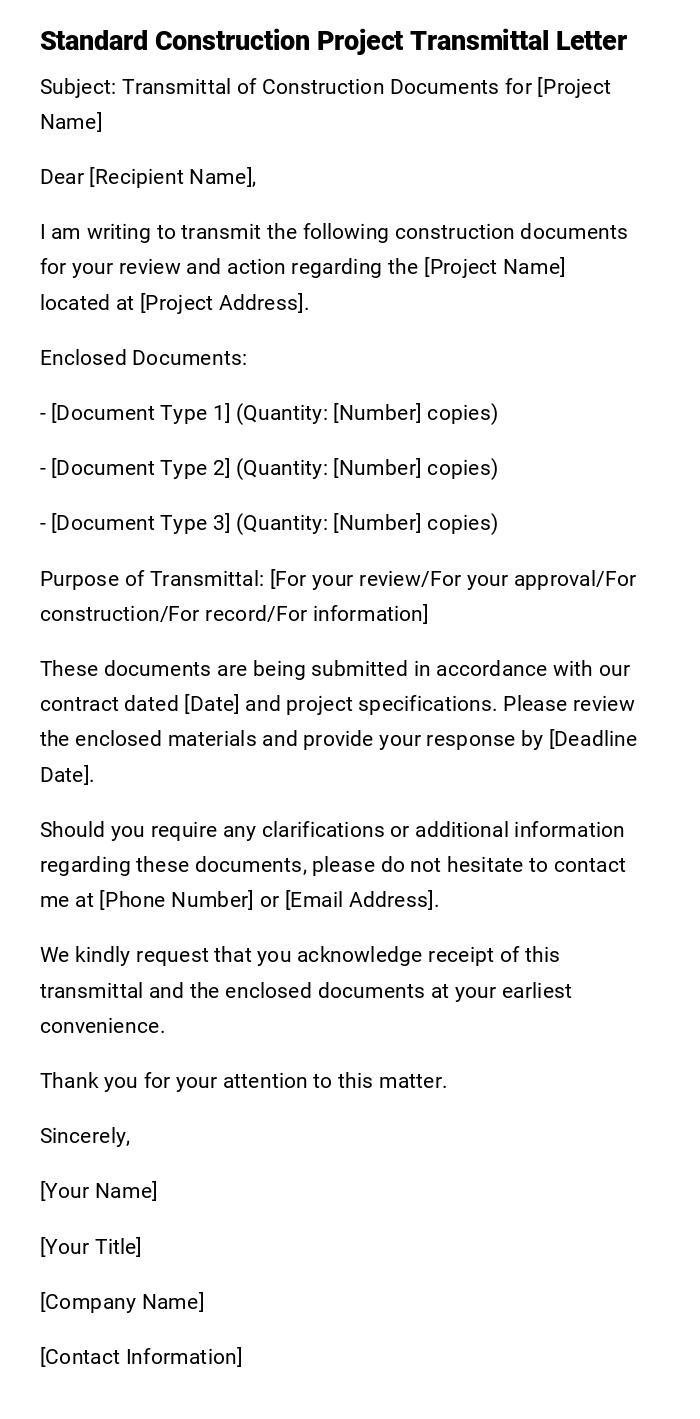
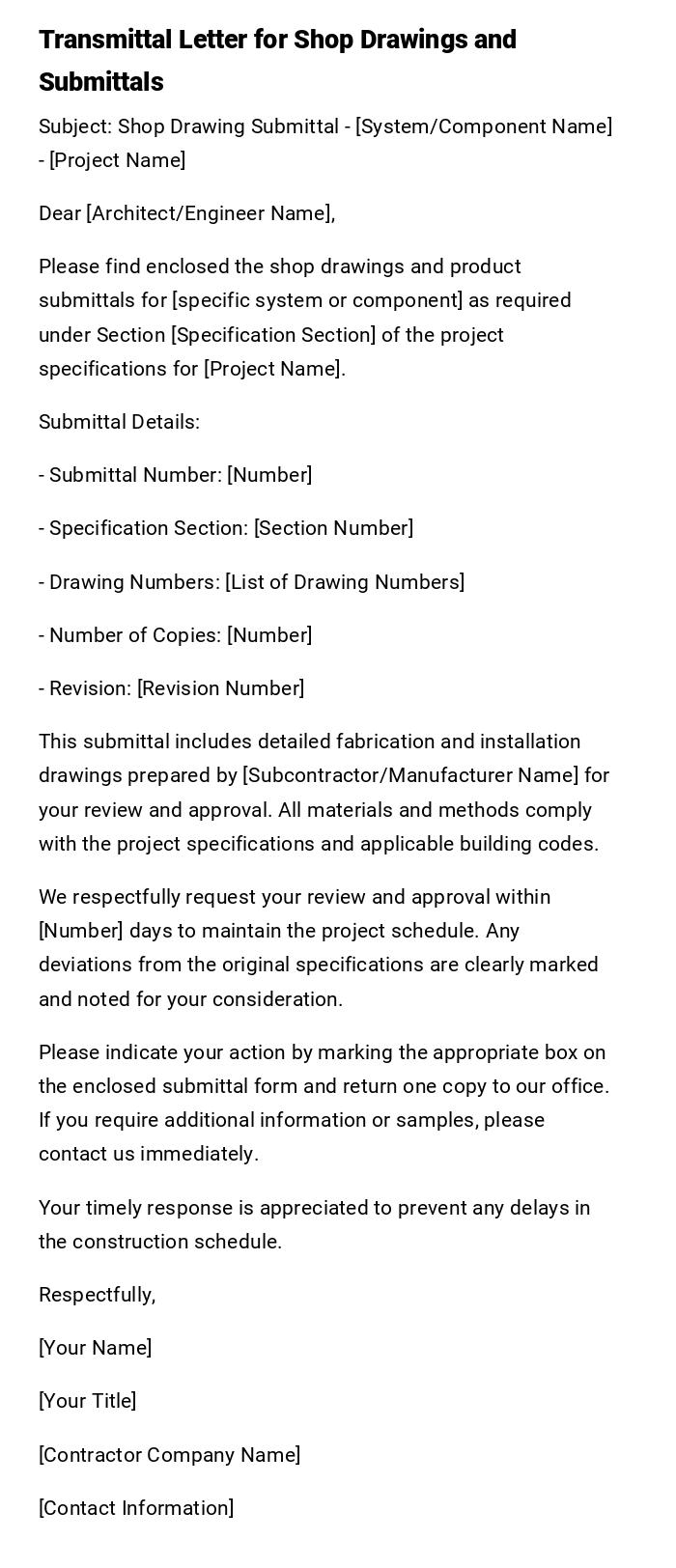
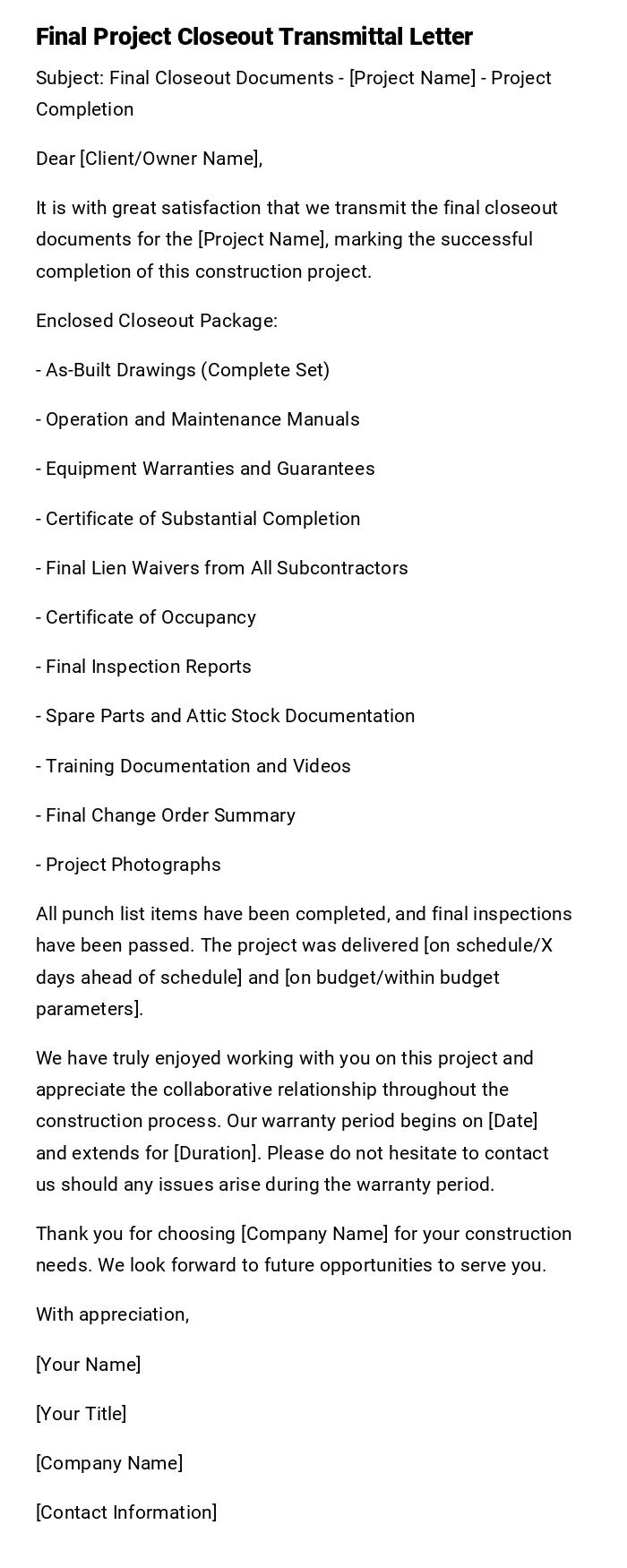
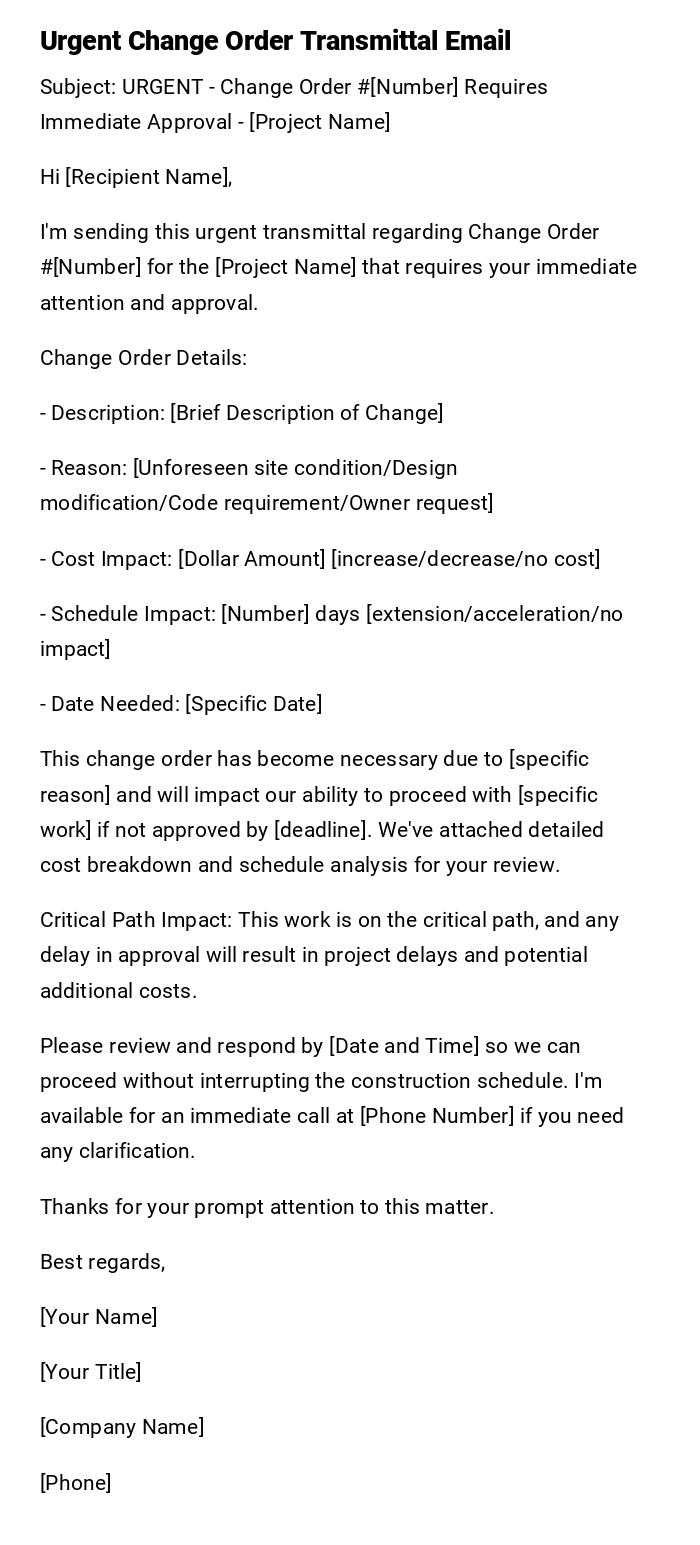
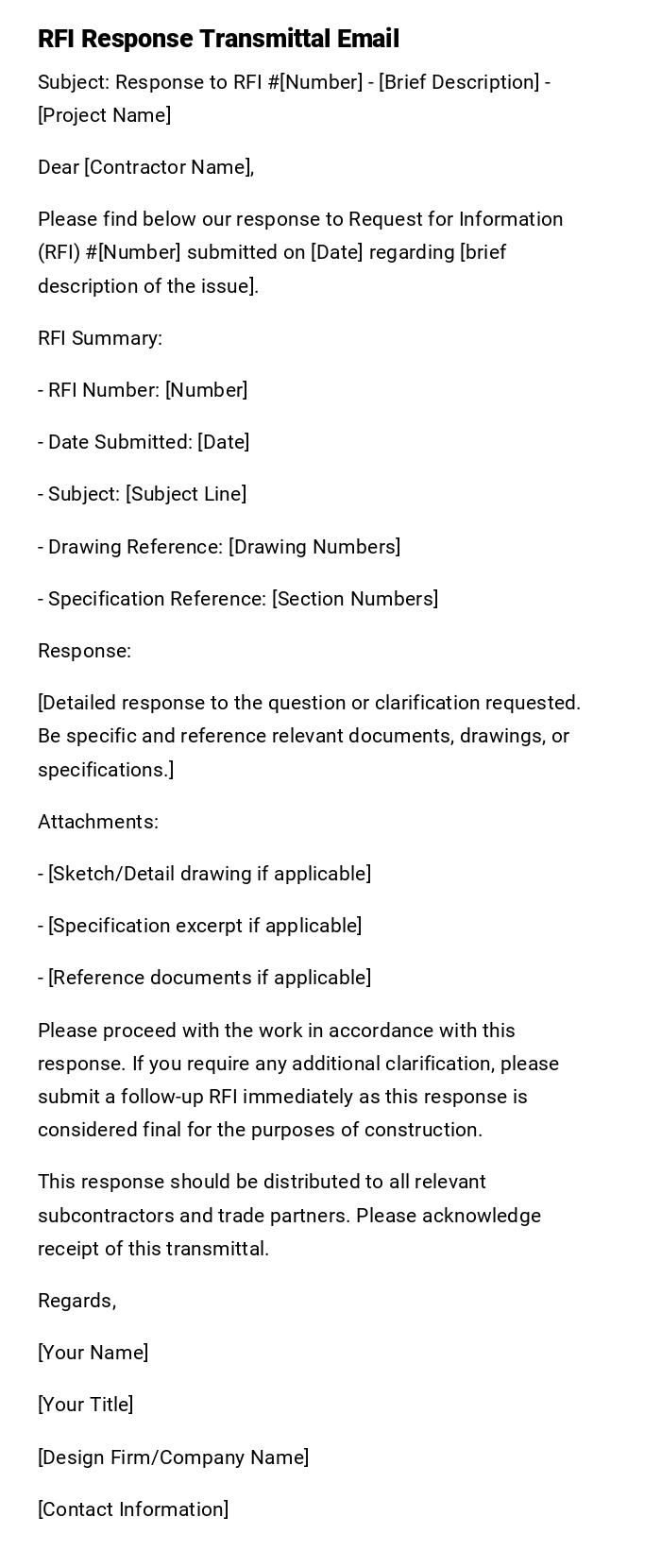
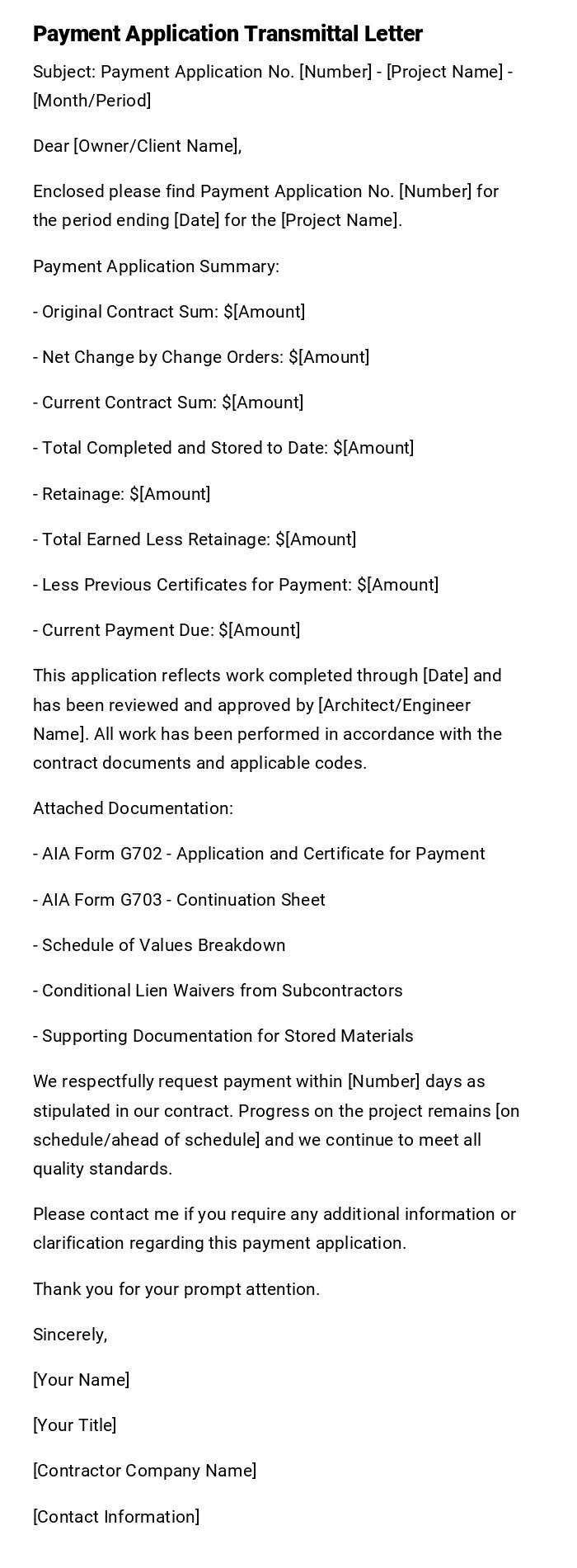
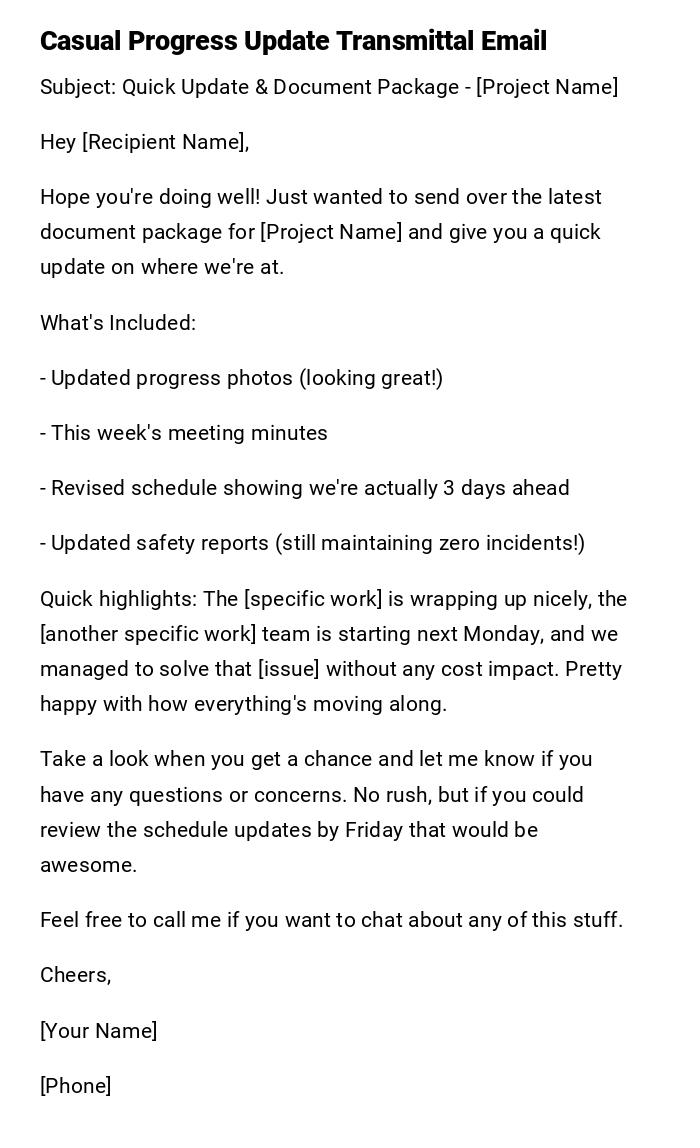
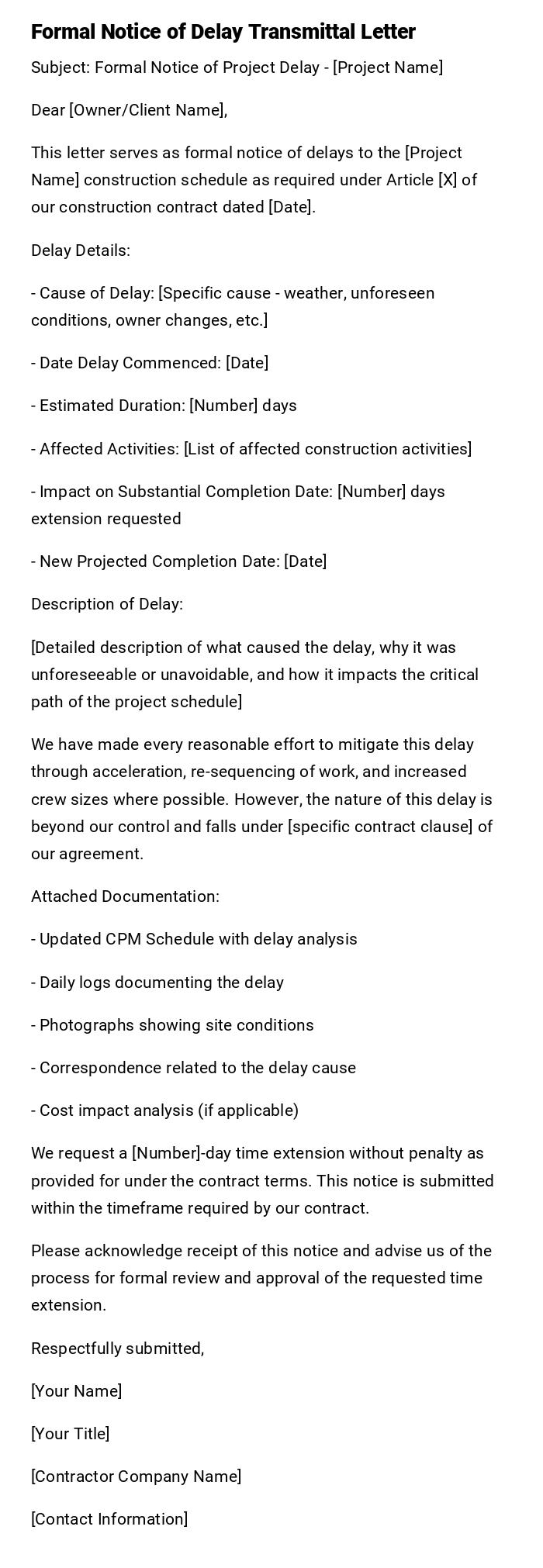
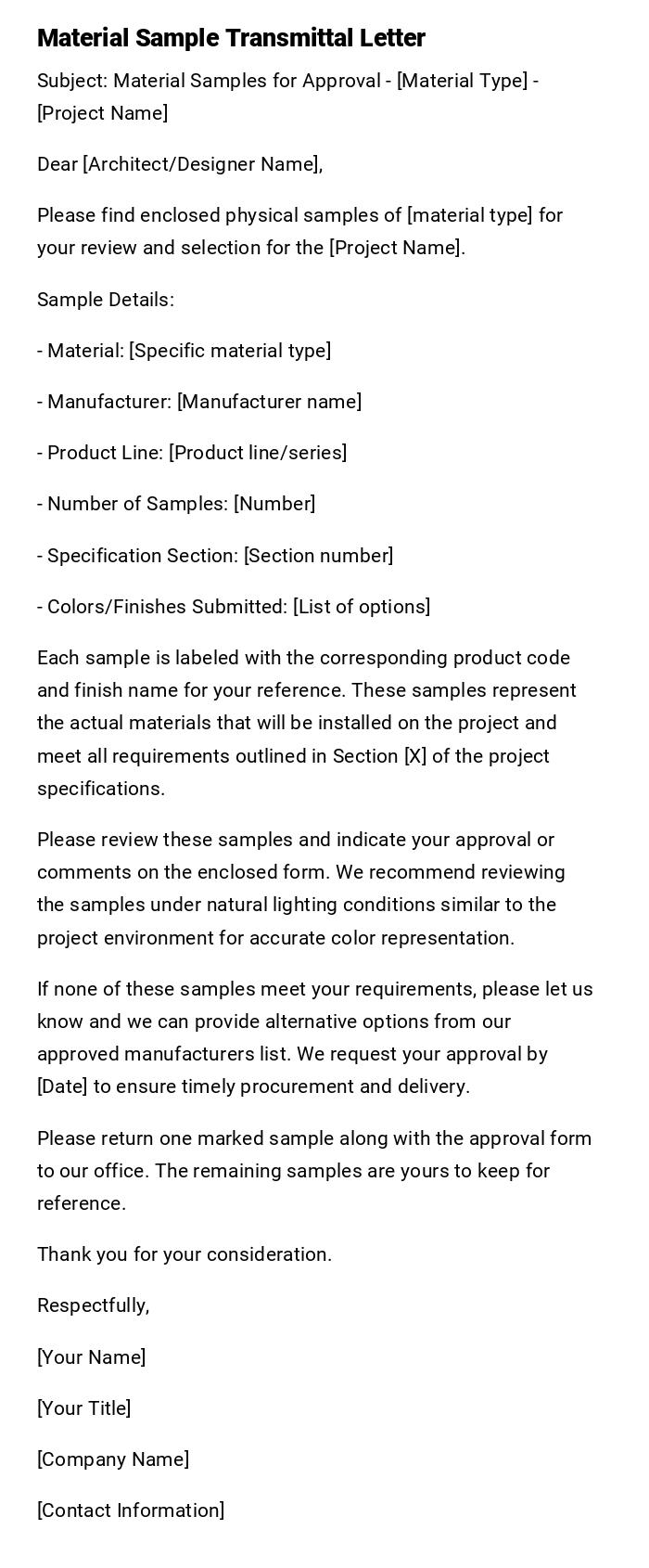
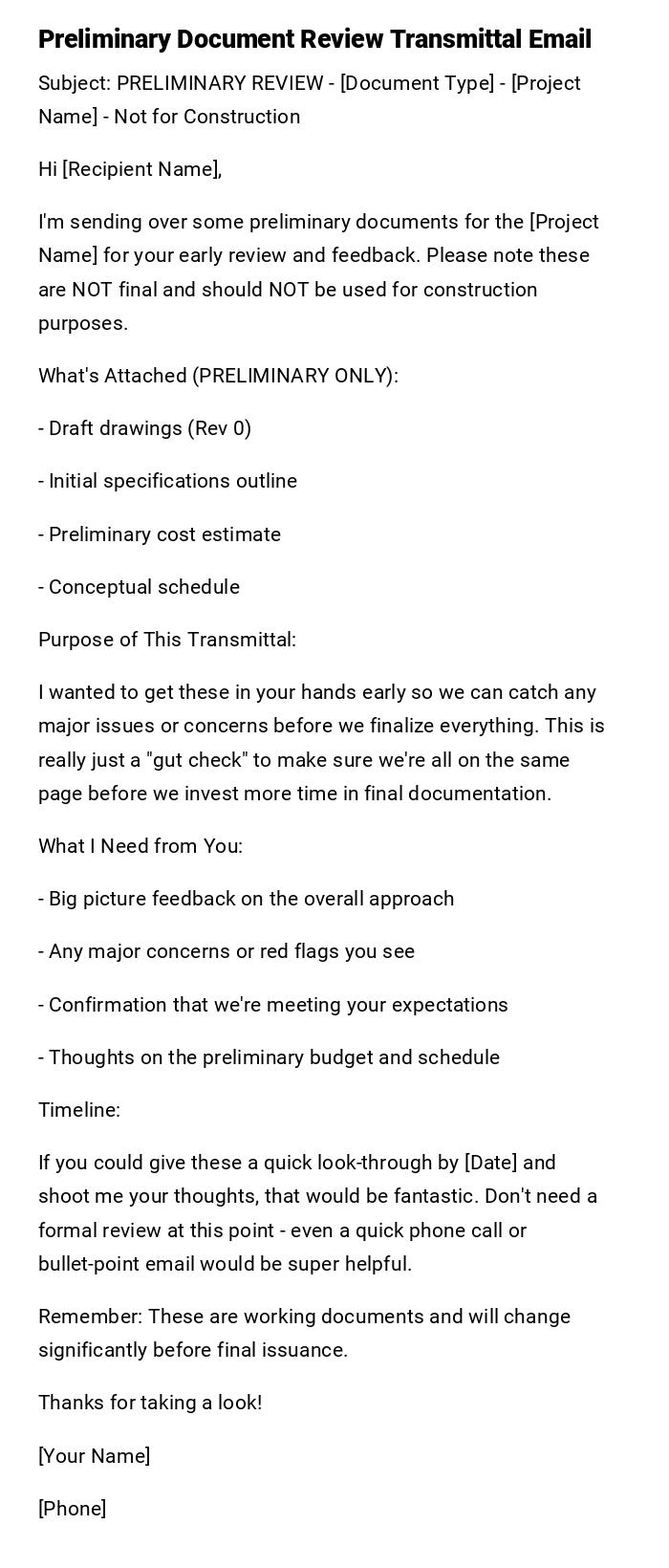

 Download Word Doc
Download Word Doc
 Download PDF
Download PDF